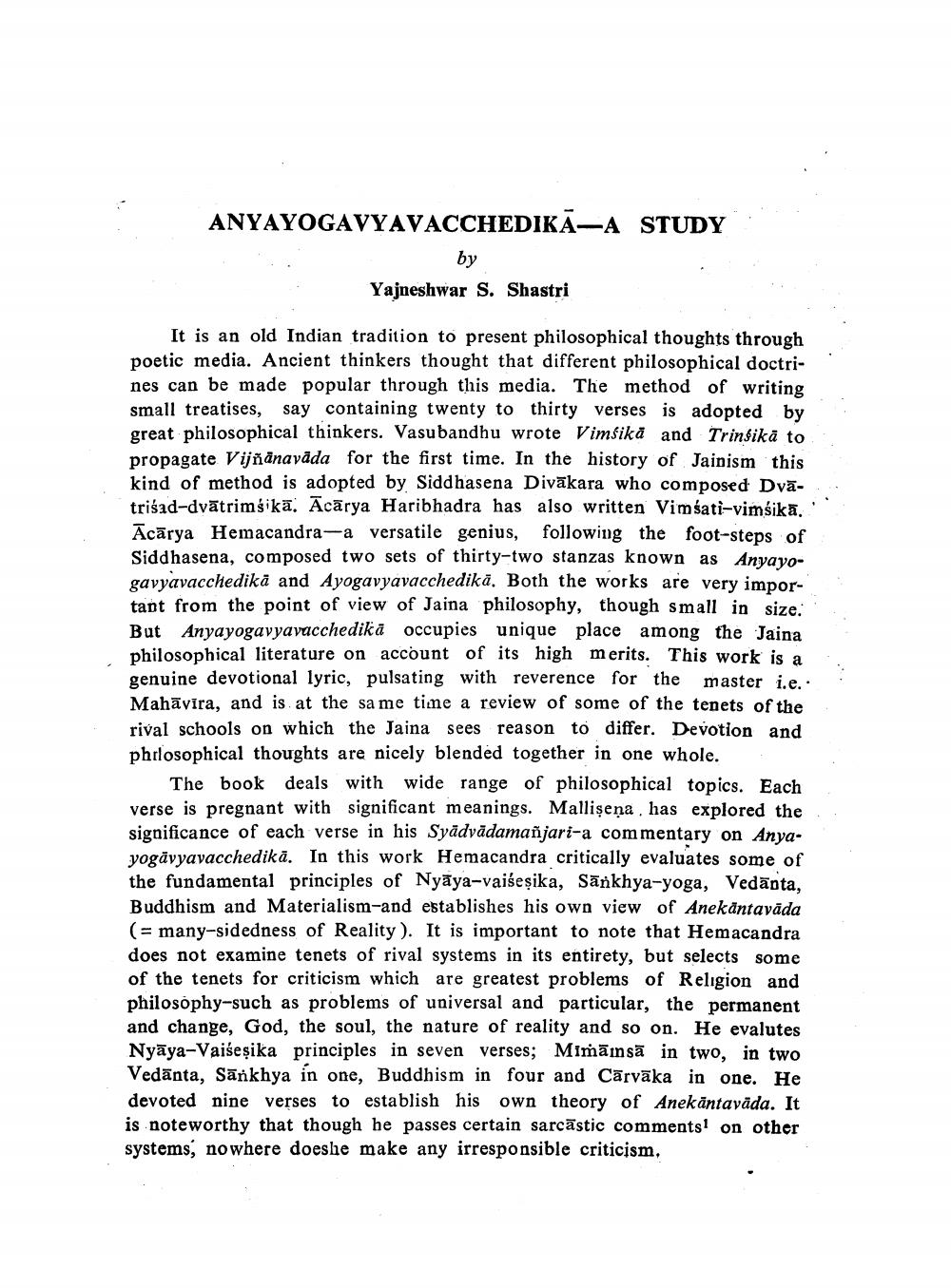________________
ANYAYOGAVYAVACCHEDIKA-A STUDY
by
Yajneshwar S. Shastri
It is an old Indian tradition to present philosophical thoughts through poetic media. Ancient thinkers thought that different philosophical doctrines can be made popular through this media. The method of writing. small treatises, say containing twenty to thirty verses is adopted by great philosophical thinkers. Vasubandhu wrote Vimlika and Trinikä to propagate Vijnanavada for the first time. In the history of Jainism this kind of method is adopted by Siddhasena Divakara who composed Dvatrisad-dvätrimska. Acarya Haribhadra has also written Vimsati-viik Acarya Hemacandra-a versatile genius, following the foot-steps of Siddhasena, composed two sets of thirty-two stanzas known as Anyayogavyavacchedika and Ayogavyavacchedika, Both the works are very impor tant from the point of view of Jaina philosophy, though small in size. But Anyayogavyavacchedika occupies unique place among the Jaina philosophical literature on account of its high merits. This work is a genuine devotional lyric, pulsating with reverence for the master i.e.. Mahāvīra, and is at the same time a review of some of the tenets of the rival schools on which the Jaina sees reason to differ. Devotion and philosophical thoughts are nicely blended together in one whole.
The book deals with wide range of philosophical topics. Each verse is pregnant with significant meanings. Mallisena, has explored the significance of each verse in his Syddvädamatjart-a commentary on Anya. yogāvyavacchedika. In this work Hemacandra critically evaluates some of the fundamental principles of Nyaya-vaiseṣika, Sänkhya-yoga, Vedanta, Buddhism and Materialism-and establishes his own view of Anekantavāda (= many-sidedness of Reality). It is important to note that Hemacandra does not examine tenets of rival systems in its entirety, but selects some of the tenets for criticism which are greatest problems of Religion and philosophy-such as problems of universal and particular, the permanent and change, God, the soul, the nature of reality and so on. He evalutes Nyaya-Vaiseṣika principles in seven verses; Mimämsă in two, in two Vedanta, Sankhya in one, Buddhism in four and Carvāka in one. He devoted nine verses to establish his own theory of Anekäntaväda. It is noteworthy that though he passes certain sarcastic comments on other systems; nowhere doeshe make any irresponsible criticism.




